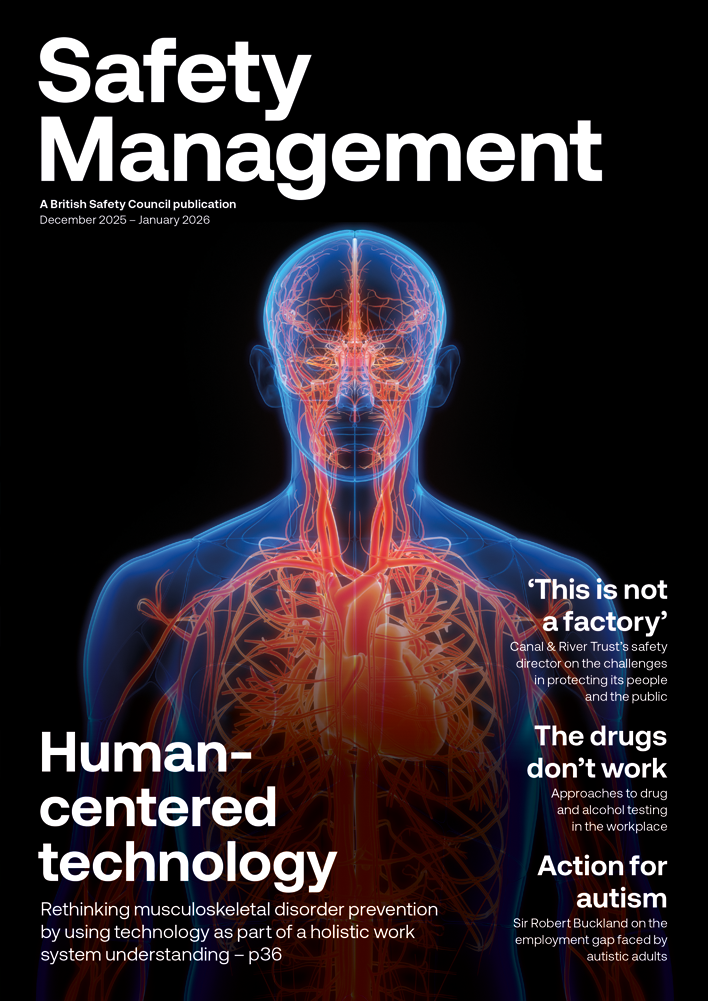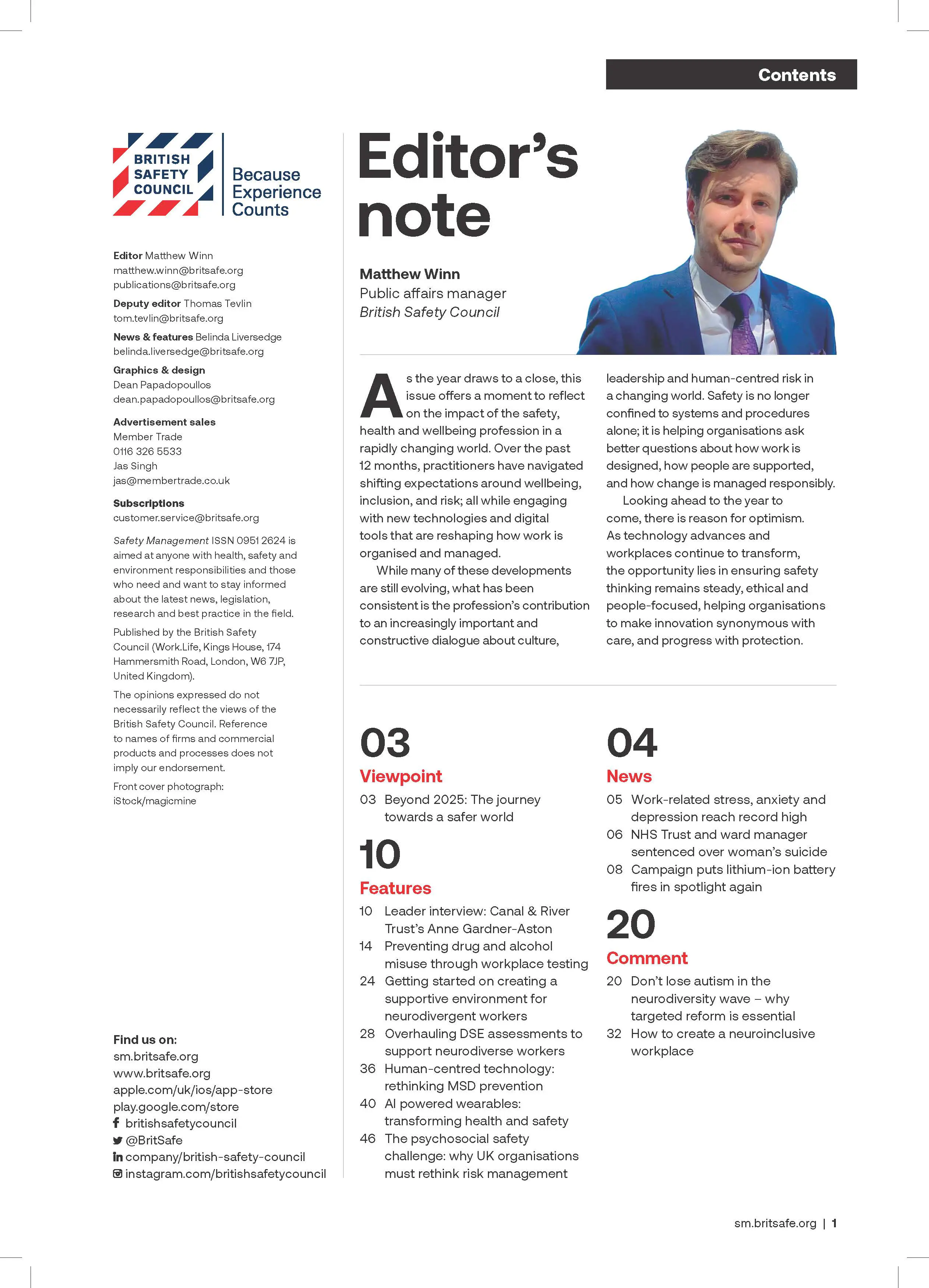As businesses make increasing use of safety monitoring to minimise the risks associated with lone working, consideration must be given to the impact on workers. Concerns that safety monitoring measures will be used for performance management purposes may well increase rather than alleviate health and safety risks.
Opinion
Lone worker monitoring technology: is it for safety or surveillance?
What is lone working?
The Health and Safety Executive defines lone workers as “those who work by themselves without close or direct supervision”. It includes delivery drivers, security staff, cleaners, home workers and some health workers – for example, community nurses and health visitors. It may also include other workers who, although physically in the same building or workplace as others, are, in reality, out of sight and sound of their colleagues. Known as ‘hidden lone workers’, this group can inadvertently be overlooked by employers.
 Photograph: iStock/SensorSpot
Photograph: iStock/SensorSpot
What are the risks?
Lone workers face many of the same hazards at work as anyone else, but there is a greater risk of these hazards causing harm because the worker may not have anyone to help or support them if things go wrong.
For example, lone workers may be more vulnerable to the risk of workplace violence, particularly when working late or when their work involves entering other premises or homes. Likewise, the ability to summon emergency help and first aid may be limited for a lone worker in distress or who has been overcome by sudden illness.
Similarly, lone workers may be more vulnerable to workplace health and safety risks, including from hazardous substances or equipment challenges, when they work in isolation. The particular work environment might also present unique challenges. For example, there might be risks associated with repetitive tasks, prolonged sitting or spending long periods alone, all of which can impact not only on employees’ physical but also mental health. Feelings of disconnection and isolation are recognised as potential causes of stress, anxiety and depression.
In each case, employers must assess the particular risks that arise and put in place suitable health and safety mitigations, including control measures to account for individual worker vulnerabilities. However, controlling the risks of lone working, albeit well-intentioned and legally required, can be met with resistance from workers who may be concerned the measures will impact their existing autonomy, freedom and independence. Therefore, the introduction of risk reduction measures requires careful consideration and assessment.
The legal position
The starting point is the Health and Safety at Work etc. Act 1974, which imposes general health and safety duties on employers “so far as is reasonably practicable”. This includes implementing policies and procedures that mitigate risk, as well as the provision of information, instruction, training and supervision.
In addition, the Management of Health and Safety at Work Regulations 1999 (the Management Regulations) require employers to undertake suitable and sufficient risk assessments, provide health surveillance in appropriate circumstances, consider employees’ capabilities, and deliver adequate health and safety training.
Employers should carry out a risk assessment to determine whether lone working is a viable option, and the risks associated with it. Some roles are generally considered as unsuitable for lone working, such as working in a confined space where a supervisor needs to be present, working near exposed electricity conductors or working with vehicles carrying explosives.
Lone working can be considered as part of a general risk assessment or the risks can be assessed separately, and the assessment should be updated when things change, or new risks are identified.
The Management Regulations set out a hierarchy of controls, known as the general principles of prevention, to be applied by employers when implementing any preventative and protective measures. These are ordered from most to least effective and include risk avoidance (or combatting risk at source), adapting to technical progress and developing an overall prevention policy. This policy should, among other things, consider technology, the organisation of work and working conditions, social relationships and the influence of factors relating to the working environment.
Although information and training are viewed as less effective methods of prevention in the hierarchy of controls, employers should also ensure workers are provided with appropriate training and instruction.
Safety monitoring
As safety must move with the times in order to avoid becoming static, the mitigation measures adopted by employers of lone workers are increasingly including worker safety monitoring.
Worker safety monitoring means the use of monitoring technology to manage the status of workers when they are working alone. This can include:
- Body worn cameras (with SOS buttons)
- SOS alarm fobs
- CCTV
- Mobile phone apps.
The device or app normally connects to a monitoring centre, via Wi-Fi or mobile data connection, which receives reports if a certain event occurs, such as the user pressing the SOS button or a silent alarm. In some cases, there may just be a continuous feed of information/data, without a specific event having to occur.
Mobile phone apps are deployed by many organisations. They have the advantage of a number of functions and being relatively easy to use. With ready access to the GPS, Wi-Fi and mobile data of the user’s phone, they can offer features such as an SOS function, timed sessions (where a worker must confirm their safety after a set period), welfare checks, fall detection and non-movement alerts.
Each event will be flagged to a monitoring centre which will respond accordingly. App providers have access to the emergency services database and can quickly report incidents to them.
A double-edged sword?
While monitoring devices undoubtedly offer benefits for reducing the risks associated with lone working, their introduction can cause concern among the workforce. Issues may arise if the affected workers suspect the devices are being used not for (or not only for) safety reasons, but also to enable surveillance of their activities, such as location, attendance and productivity.
As a result, rather than mitigating risks from lone working, workers’ concerns about the purpose of the monitoring may increase their stress and anxiety, resulting in heightened feelings of disconnection and managerial distrust.
To avoid this, careful consideration should be given to the use of such devices and their potential impact on worker autonomy. From the outset, employers should consider whether the use of monitoring devices with surveillance capabilities is really a reasonable and proportionate response to the risk identified from lone working.
In particular, employers must consider if the particular proposed device is in fact appropriate. For example, would a panic button or two-way radio suffice? If so, a mobile tracking device may well be met with some scepticism and resistance. If, however, there are reasons for preferring a device with tracking capacities, these reasons should be clearly communicated to employees.
Data access should also be considered. This is because granting access to the data obtained from monitoring activity to certain people in the business will undoubtedly determine how it is used. For example, giving access to line managers could, even inadvertently, turn the emphasis from safety to productivity. By contrast, if monitoring is outsourced to an external organisation, workers may have some comfort that the purpose is primarily for ensuring their safety.
Communication
Used properly, safety monitoring equipment can help to build mutual trust between employers and workers. With the increasing emphasis on mental health and wellbeing, such devices can really improve outcomes for lone workers. They can provide contact and opportunities to reflect and educate, via regular wellness surveys, which are fully considered and acted upon, as well as by providing in-built information and tools for stress management.
Communication is key to the successful deployment of this technology. Employers should begin by consulting the workforce and should explain the thinking behind any proposed introduction of safety monitoring, along with details of the safety features and benefits.
Workers should be encouraged to provide input to the process, and to ask questions, which should be answered candidly, with complete transparency encouraged. Where possible, pilot schemes should be trialled, and open and honest feedback should be sought, and then given careful consideration.
Technology provides a real opportunity to make in-roads in lone worker safety and wellbeing, securing the best outcomes for both employer and worker. Its success depends on full understanding and buy-in from all concerned. This can only be achieved with full transparency.
Hayden Singh is an associate solicitor at Pinsent Masons LLP.
Contact him at:
linkedin.com/in/haydensingh/
OPINION

How to create a neuroinclusive workplace
By John Robinson, Schofield Sweeney on 09 December 2025
The modern workplace is a diverse environment. Most workforces will be made up of individuals representing the majority of the groups protected under the Equality Act 2010.

Don’t lose autism in the neurodiversity wave – why targeted reform is essential
By Rt Hon Sir Robert Buckland KBE KC on 03 December 2025
Autistic adults have waited too long for meaningful reform. They have shared their experiences and expertise. Now they deserve action, accountability, and transformation.

Inclusion saves lives: embedding equality, diversity and inclusion (EDI) into global occupational safety and health
By Umer Changaiz, CMIOSH on 03 December 2025



